See Japan's Largest Sand Dunes! Tottori: 5 Places to Visit

Tottori Prefecture of west Japan has spectacular sand dunes that evolve through out the seasons, something you won't find anywhere else in Japan. Tottori is also known for the largest catch of crab in all of Japan. Explore the desert by the beach and the history surrounding Mount Daisen and the surrounding towns and shrines.
Tottori Prefecture, located towards the western side of the main island of Japan, is a relatively wide prefecture extending from the east to the west. Due north is the Sea of Japan, and the coastline which includes the Tottori Sand Dunes, provides a unique scenery known as hakushaseisho referring to the white sands along with vibrant green pine trees. The southern regions are mountainous with the Chugoku Mountains and Mount Daisen, boasting the highest peak in the Chugoku region. The climate in Tottori is typically warm, and each of the four seasons are vivid, providing many fine days between spring through autumn and snowfall in winter season.
Table of Contents:
1. Tottori Sand Dunes (Sakyu)
2. Mount Daisen’s Scenery
3. Mount Daisen’s Shrines
4. Kurayoshi White Wall District
5. Chizushuku
Tottori Travel Guide
- 5 restaurants in Tottori
- 5 Recommended Hotels in Tottori
- Tottori Transportation
- Festivals and Events in Tottori
- Tottori Climate and Clothing
1. Tottori Sand Dunes (Sakyu)
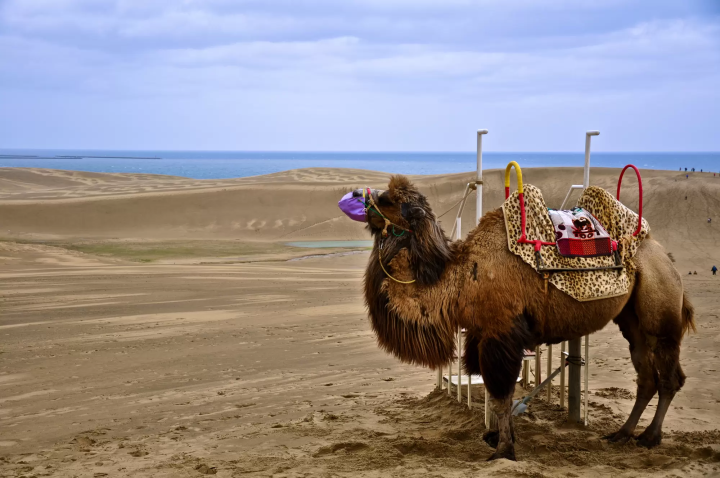
Photo by Pixta
Sand Dune’s are probably not the first kind of terrain you think of when you talk about Japan, but Tottori’s sand dunes are a spectacle that will make you feel like you’re in a whole different place. This desert-like area along the coast is Tottori’s most famous attraction and is located just outside of the city center.
Each season provides a unique look at these dunes, from the amazing sunsets and star-filled night skies to the entire area being coated with snow in the winter. Not only that, but when there is fair weather you can experience a variety of outdoor activities including fat biking, sandboarding, paragliding, sand yoga, and if you really want to feel like you’re in the desert, you can even experience riding a camel across the dunes!
For visitors who are more the indoor type, a short way from the dunes is The Sand Museum, which has some unbelievable sand sculptures on exhibit. The exhibition themes change periodically and are based off different countries or regions. Make sure to look at their website to see what’s currently on display!
2. Mount Daisen’s Scenery
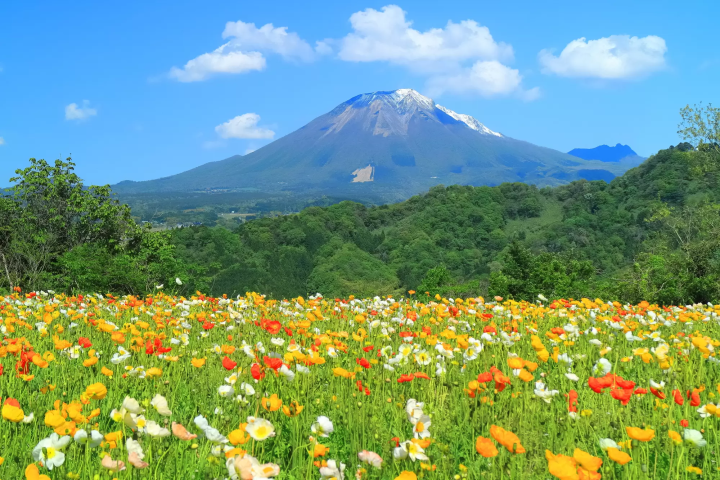
Photo by Pixta
Mount Daisen is the highest mountain in the Chugoku region, having an elevation of 1,709 meters. Mount Daisen is the top choice for mountain climbing in Japan’s western region. When viewed on the western side from Yonago city, the scenery from the foot of the mountain is like that of Mount Fuji, giving it the title Houkifuji (Houki’s Fuji).
And much like Mount Fuji, Mount Daisen is encompassed by a variety of different areas, giving you a wonderful view of the mountain combined with each area’s unique scenery. Some seasonal recommended viewing spots are Niodo Park in the Oyama area and the Tottori Prefectural Flower Park (Hanakairo) where you can enjoy the view of the Daisen with the scenic view of the park’s flowers.
Niodo Park
Tottori, Saihaku District, Daisen, Miyauchi
Tottori Prefectural Flower Park (Hanakairo)
Tottori, Saihaku District, Nambu, 110 Tsuruda
3. Mount Daisen’s Shrines
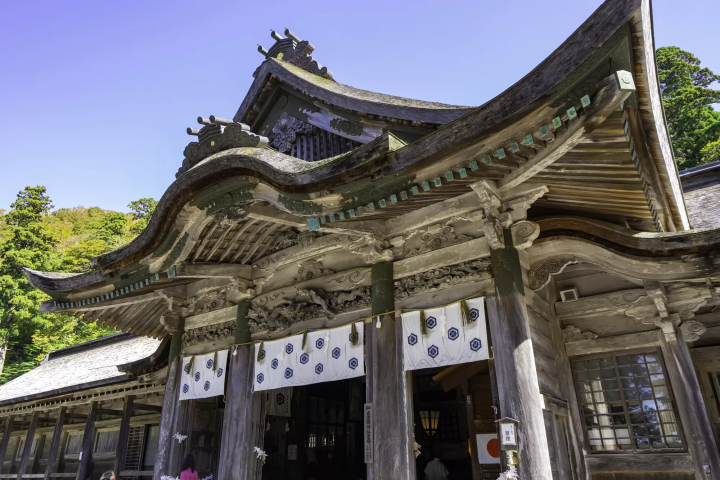
Photo by Pixta
Ogamiyama Shrine Okunomiya is one of Mount Daisen’s shrines, its name coming from Mount Daisen’s former name Ogaminotake. Being a popular shrine to come and pray for success and safety, you can access the shrine by the 700-meter-long stone path. There are multiple festivals held at Ogamiyama Shrine, one festival in the spring and the Daisen Summer Mountain Opening Festival (Daisen Temple Taimatsu Parade). The parade held before the festival begins has torches along the road, creating a vivid showing of the beautiful flames as you approach the shrine in the evening.
The Kamochi Shrine is another famous shrine, drawing people in to pray for their fortune and wealth. The deities enshrined here are known as the gods of fortune, nation building, and government. The history comes from the Kamakura era, where the influential Kamochi Kagefuji came here to pray for victory against battling the Shogunate. In modern times visitors have come here to pray for good luck, and there are stories of successful businesses and even winning lottery tickets! If you’re hoping to win the next big lottery, perhaps coming to pray at this shrine may increase your chance at winning? You won’t know until you try!
Kamochi Shrine
Tottori, Hino District, Hino
4. Kurayoshi White Wall District
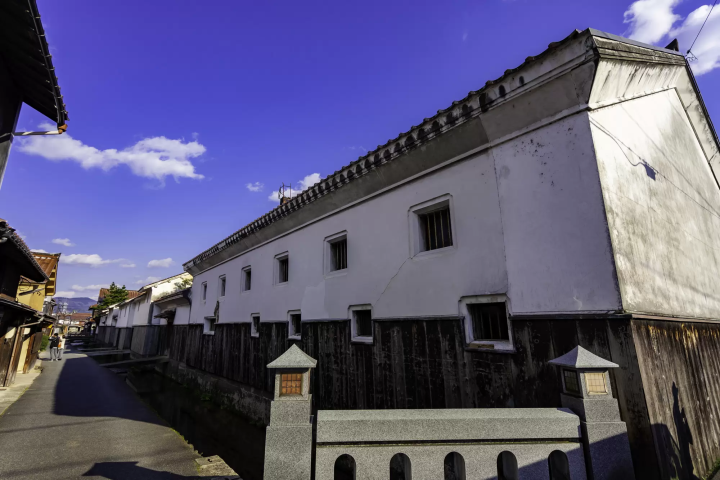
Photo by Pixta
The Kurayoshi White Wall District (Kurayoshi Shirakabedozogun) are many storehouses built along the Tamagawa River, all of which were built back during the Edo and Meiji periods, and they retain their historical structure to this day. As such, this historically preserved area and its buildings have been designated as a national important preservation district. This elegant townscape has stone bridges across the Tamagawa River and has a peaceful village feel with the building’s designs of white walls and red roof tiles.
You can enjoy taking a stroll through Kurayoshi and even become one with the scenery by dressing up in Yakata before walking along the streets! One cultural experience you can participate in is Hodokigami where if you have incidents from the past that you want to move along from, you can write about them on a dissolving piece of paper and release it into the pond. As you watch the paper dissolve and fade into the water, you will be filled with new determination towards your new path, and it will help you grant your wishes for the future!
5. Chizushuku
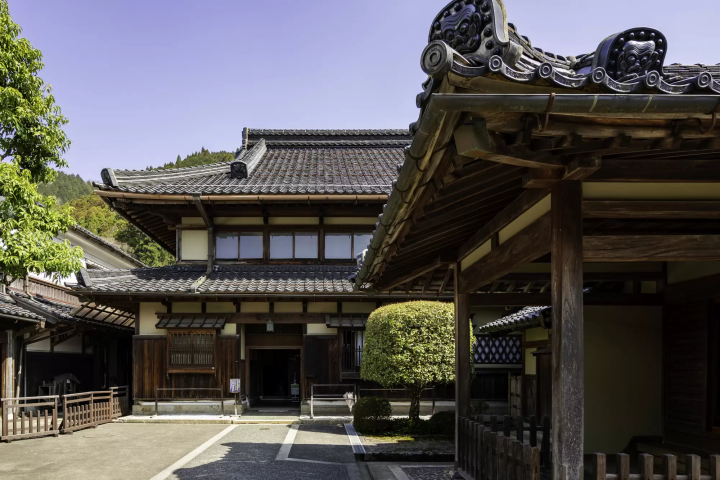
Photo by Pixta
The old town of Chizu has a townscape reminiscent of the historical Japanese feudal government. In this historical area, you’ll find the magistrate’s office and official noticeboards that were placed, along with teahouses in the town.
The spotlight for the area goes to the Ishitani Residence building. This building was the largest building in Chizu Town and served as the largest post station of the Tottori area during the Edo period. The building has been designated as a National Important Cultural Property.
Other stops you may want to visit during your walk through the streets are the Suwa Sake Brewery, known for their Daiginjo sake.
Chizushuku
Tottori, Chizu Yazu District
5 Restaurants in Tottori
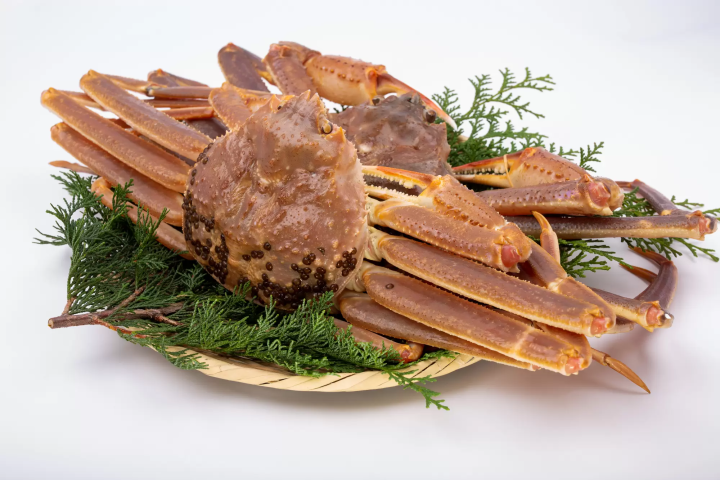
Photo by Pixta
1. Ginrin
Crab is a beloved seafood in Japan, and Matsuba crab, which are what snow crab caught in the Tottori region are called. Sakaiminato of Tottori boasts the largest catch of crabs in all of Japan, even beating out Hokkaido which is very famous for crab and seafood. Ginrin is a famous chain restaurant of Tottori, offering fresh seafood including fish and shellfish from the Sea of Japan.
Ginrin
Tottori, 365 Suehiroonsencho
2. Yumigahama
Within the giant fish market of Nakaura, you will find Yumigahama, offering fresh crab and other seafood bowls using the freshest catch straight from the market it sits in. Yumigahama’s most popular dish is their Kanitoro bowl, which uses luxurious chunks of crab meat that melt in your mouth much like toro from tuna.
Yumigahama
Tottori, 209 Takenouchidanchi Sakaiminato
3. Kaiyoutei
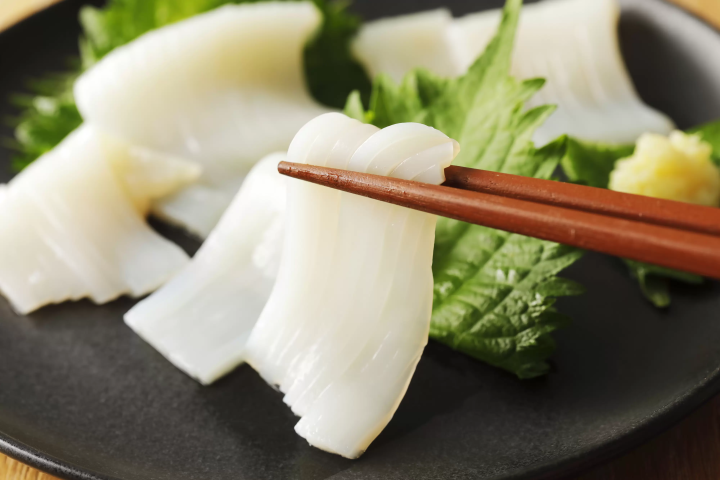
Photo by Pixta
Kaiyoutei is a restaurant that serves fresh seafood and notably serves fresh shiroika (white squid). You know you are getting the freshest sashimi, as Kaiyoutei is known for drawing natural sea water into their reserve tanks, which ensures that the delicious seafood is alive and kicking until they prepare the dish upon getting your order!
Kaiyoutei
Tottori, 3-27-1 Karochonishi
4. Mitaki-en
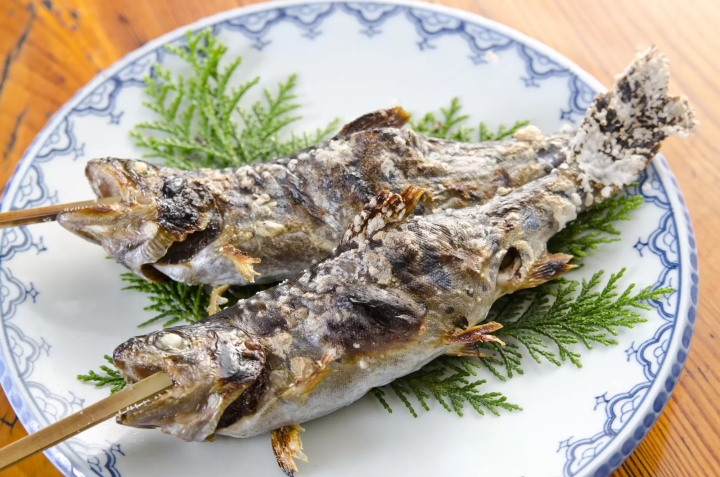
Photo by Pixta
Stepping away from the sea and heading to the mountains and rivers will provide you with a whole different kind of cuisine. At Mitaki-en, located right beside the Kitamata River, will provide you with a lovely meal in a peaceful forest atmosphere. The restaurant is run in an old style Japanese home, and they prepare meals using natural vegetables that grow plentifully on the mountain, along with freshly grilled Japanese cherry salmon caught straight from the neighboring river. The fish are grilled with Japanese sansho pepper miso, which is also used as a topping for their homemade konjac.
Mitaki-en
Tottori, Yazu District, 277 AshizuChizu
5. Sakyu Kaikan
When visiting the Tottori Sand Dunes, you can visit the Sakyu Kaikan. Here they have a souvenir shop and restaurant you can take a break at. They serve a Sakyu Sundae for 450 yen (tax included), it’s an adorable little parfait sundae made with pear jelly and vanilla ice cream with kinako powder and a cute camel shaped cookie on top – creating a dessert that looks like a scene from the desert! It’s not too often you can enjoy a dessert and a desert at once!
Sakyu Kaikan
Tottori, 2164 Fukubechō Yuyama
5 Shopping Places in Tottori
1. Roadside Station Shinwa-no-sato Shirousagi
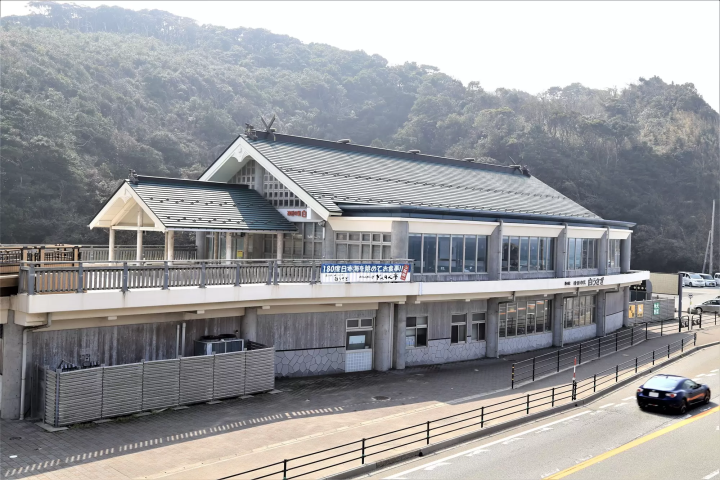
Photo by Pixta
This roadside station sits along National Route 9, a route that travels along the Sea of Japan and the Hakuto Coast, which are the settings for the myth of the white rabbit, and behind the station is the Hakuto Shrine that enshrines the white rabbit.
At the Mythical Village White Rabbit (Shinwa-no-sato Shirousagi), you can find a variety of souvenirs, from the local sake and other specialties. For more info on traveling, you can also pick up tourist pamphlets while taking a rest at this stop.
Roadside Station Shinwa-no-sato Shirousagi
Tottori, 613 Hakuto
2. Sweets Castle Kotobuki-jo
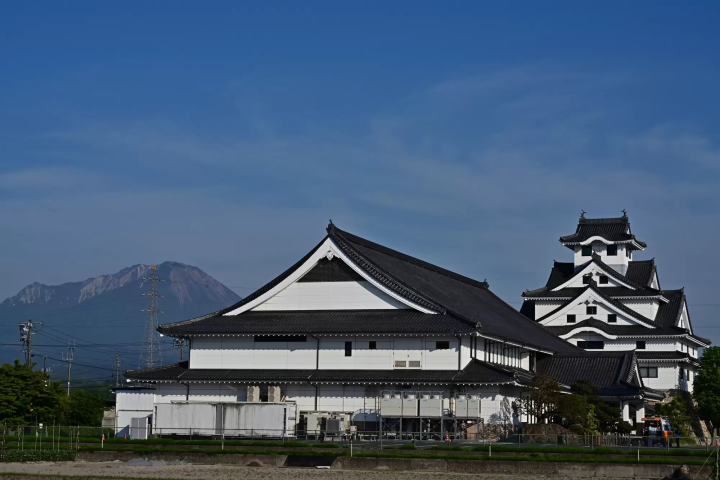
Photo by Pixta
From the Yonago Expressway you can see a large castle as you exit into west Tottori. This castle is the symbol of Yonago and is called Sweets Castle Kotobuki-jo (Okashino Kotobukijo). Inside you’ll find an assortment of different Japanese sweets and candy taste and buy.
There is also a tour of the factory, making it feel like a sweets theme park. From the observatory around the castle, you can get a panoramic view of the Sea of Japan and Mount Daisen.
Sweets Castle Kotobuki-jo
Tottori, Yonago, 1605-1 Yodoecho Sada
3. Wagasa Denshokan
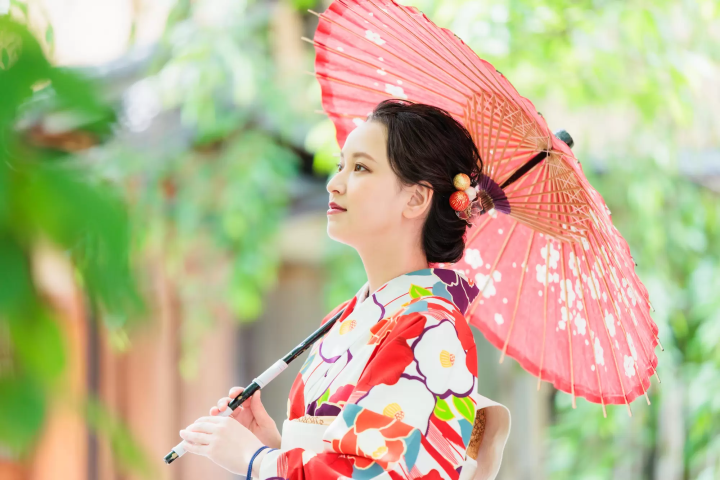
Photo by Pixta
The Wagasa Denshokan is a museum for traditional Japanese umbrellas, which opened in 1990 for passing down the traditional manufacturing techniques of Yodoe umbrellas. Wagasa (Japanese umbrellas) are made from wood and oiled paper and in the Taisho era nearly 170,000 umbrellas were produced annually by Yodoe. With the introduction of modern western umbrellas, manufacturing of wagasa has greatly decreased, but to this day authentic wagasa make amazing gifts.
When visiting Wagasa Denshokan, not only can you purchase umbrellas, but you can also see the manufacturing process and even experience the sewing process with reservations.
Wagasa Denshokan
Tottori, YodoeYonago, 796 Yodoechō
4. Kurayoshi Kasuri
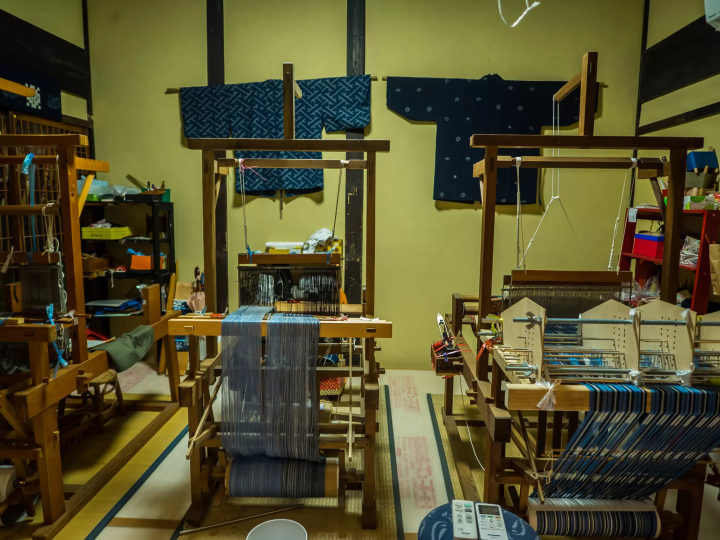
Photo by Pixta
The textiles of Kurayoshi Kasuri are said to have originated back in the late Edo period in Kurayoshi city of Tottori. The pattern weaving is known as Kasuri, and Egasuri is a type of weave where elaborate pictures and patterns such as leaves, landscapes, and other patterns are woven. You can purchase the textiles or find different clothing or accessories which are made using these beautiful textiles.
Kurayoshi Kasuri
Tottori, Kurayoshi, 2606 Higashinakamachi
5. Yurarin Studio
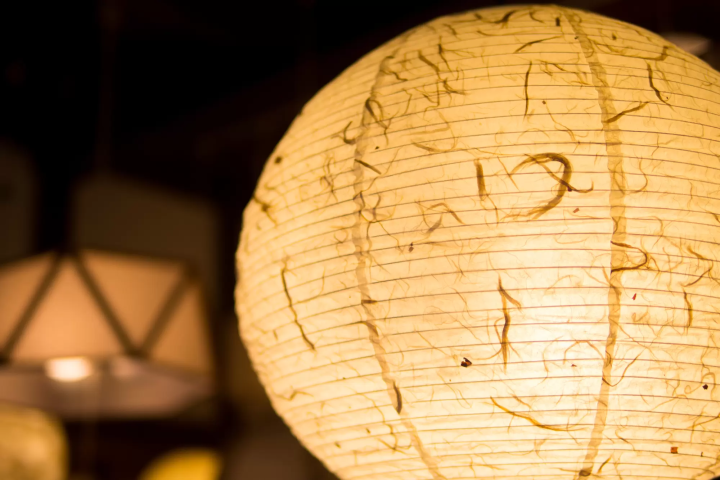
Photo by Pixta
Yurarin Studio is a workshop where the traditional craft of Inshu Washi paper and lights are combined to the art of Washi Akari. These paper lanterns are beautiful and mesmerizing, and each one is handmade with unique vine materials, so no two are alike. At this studio you can make your own delightfully original washi akari lantern!
Yurarin Studio
Tottori, Tōhaku District, Hokueichōm 1586 Yurashuku
5 Recommended Hotels in Tottori
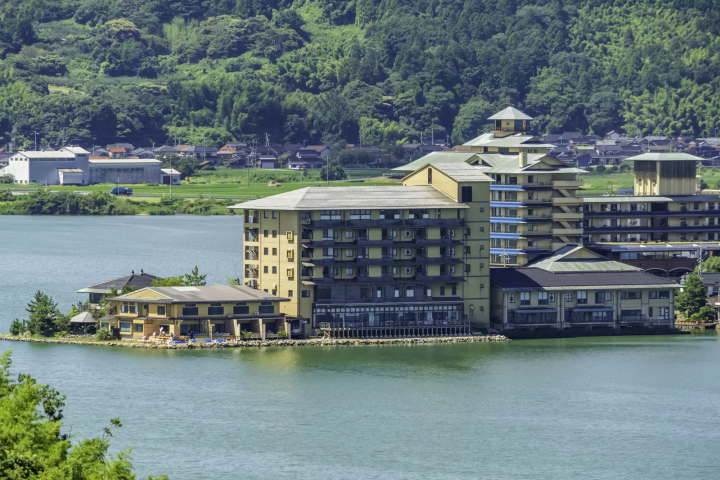
Photo by Pixta
1. Kozeniya
Kozeniya, the water viewing garden inn, has the motto “genuine free flowing hot springs, delicious cuisine, and the warmth of hospitality.” They strive to bring customers a stylish inn that lights up the entire city. As the name suggests, this Japanese inn is surrounded by a water garden with various hot springs you can relax in.
Kozeniya
Tottori, 651 Eirakuonsencho
2. Bokoro
Bokoro offers an open-air natural onsen hot spring bath on Lake Togo. The baths are structured, accessed by a bridge hovering above the lake, giving you a genuinely unique hot spring experience!
Bokoro
Tottori, Tōhaku District, Yurihama, 4-25 Hawaionsen
3. Mansuirou
Mansuirou’s onsen hot springs boasts multiple radium springs, which are known for boosting metabolism, immunity, and natural healing. Enjoy their cuisine using the seasons best ingredients at Aji no Mansuirou.
Mansuirou
Tottori, Tōhaku District, Misasa, 5 Yamada
4. Kaike Kikunoya
Kaike Kikunoya is a famous inn, known for serving delicious seafood, offering an amazing view of the Sea of Japan, and their free-flowing hot springs. Popular amongst families, why not stay at this hotel with your entire family to make some unforgettable memories?
Kaike Kikunoya
Tottori, Yonago, 4-29-10 Kaikeonsen
5. ANA Crowne Plaza Yonago
This hotel has the Yonago Castle in its background, located in the Yonago City which is known as the gateway into the San’in region. A perfect stay for both business and recreation, this hotel is a grand landmark of the area.
ANA Crowne Plaza Yonago
Tottori, Yonago, 53-2 Kumecho
Tottori Transportation
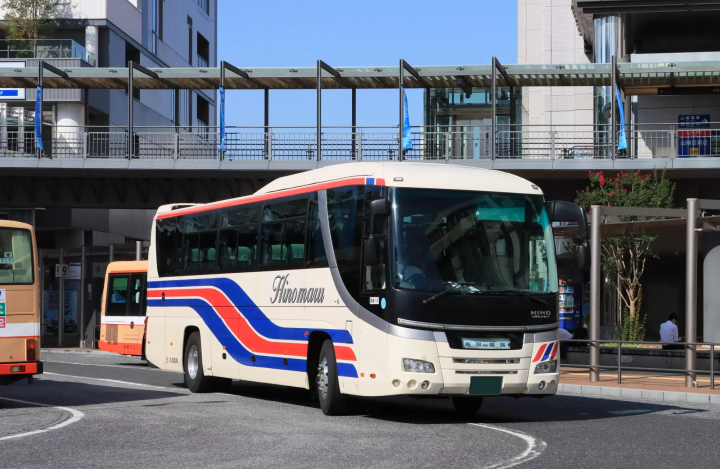
Photo by Pixta
There are many ways to get around Tottori from Tottori Airport. For getting to Tottori Station, riding the bus from the airport is quick and easy. The Hinomaru Bus can be ridden from platform 1 in the bus area of Tottori Airport. Tickets can be purchased from the arrival lobby’s ticket machines. The bus ride is about 20 minutes, and the fare is 470 yen.
To ride the train, from the airport you will need to walk 20 minutes to Tottoridaigaku-Mae Station. From the station you will want to take JR West’s San’in Main Line towards Kinosaki. The ride to Tottori station takes about 8 minutes with a fare of 190 yen.
Those looking to head to the Tottori Sand Dunes can access the area by taking a bus from Tottori Station. From Tottori Station’s bus terminal, take either the Sakyu line or the Iwami/Iwai line and get off at Sakyu East or Sakyu Kaikan stop. The bus ride takes about 20 minutes, and the fare costs 380 yen.
Festivals and Events in Tottori
1. The Nagashibina Festival of Mochigase
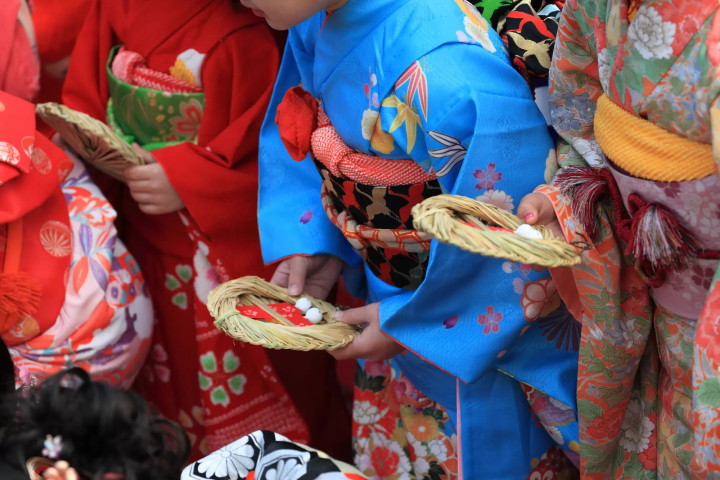
Photo by Pixta
A spring festival in Tottori City’s Yose town, the Nagashibina Festival takes place on the 3rd day of the 3rd month of the lunar calendar (late March or early April). On this day young girls float small boats made of straw containing Hina dolls and sweets like rice crackers down the Sendaigawa River, as an act to dispel bad fortune and to pray for health.
2. Daisen Mikoshigyoukou
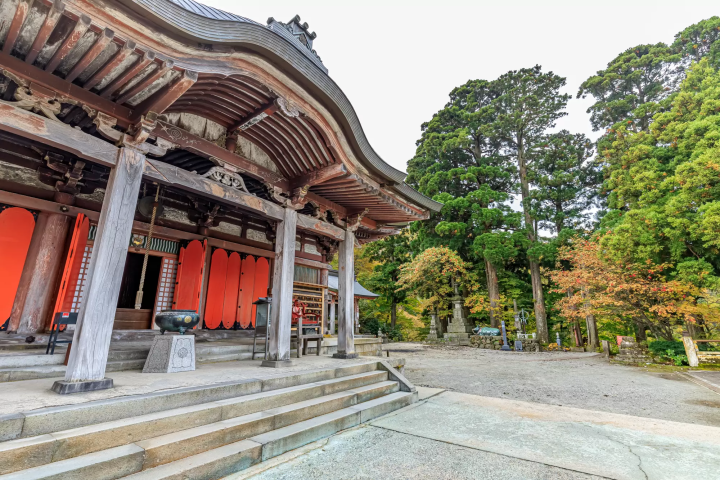
Photo by Pixta
A procession that began as a prayer service at Daisenji Temple in the Heian period, this event is known as Oyama-san to the locals. During this procession the great mikoshi is carried, many children dress up and lines of monks and people holding banners can be seen down the sacred street.
3. Mount Daisen Natsuyama Summer Festival
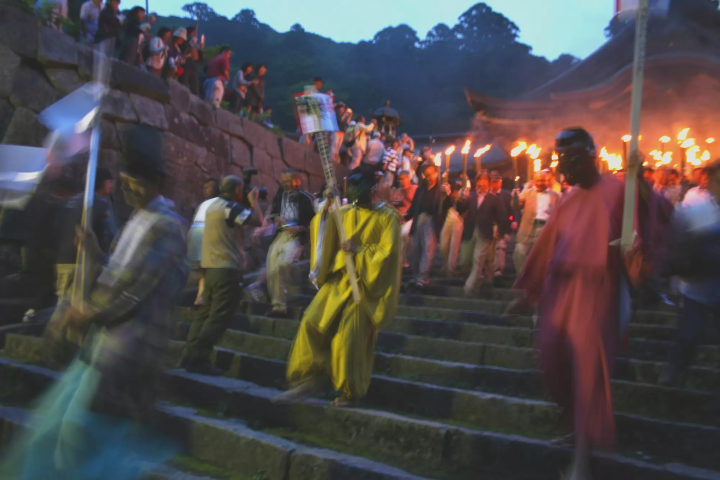
Photo by Pixta
This summer festival is held on the first Saturday and Sunday of June annually, to pray for the safety of those climbing Mount Daisen. The first night is a pre-festival, where people carrying 2,000 torches march along the path to Ogamiyama Shrine to Bakuroza, creating a flaming spectacle in the early summer night. The following day, on Sunday, a festival is held on the summit of Mount Daisen where the prayers take place and attendees are treated to sacred sake. Other events such as a concert of the healing forest are held at the venue, creating crowds throughout the entire day.
4. Yonago Gaina Festival
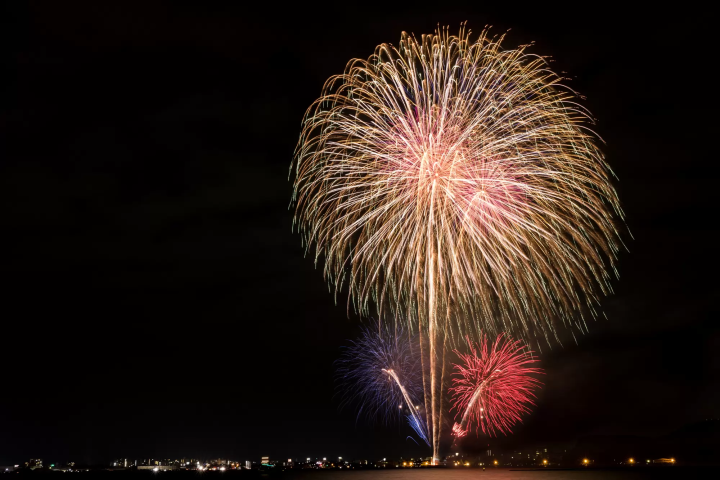
Photo by Pixta
This two-day festival is held in the summer in Yonago City. “Gaina” is a word in the Yonago City dialect meaning “big” or “great.” During the festival, thousands of fireworks light up the night sky and a lantern procession and taiko drum performance take place.
5. Sekigane Miyuki Procession
The procession of Mikoshi Togyo is held during a festival between the three shrines of Hiyoshi Shrine, Yuseki Shrine, and Otorii Shrine. The event is also known as the Daimyo Procession due to it resembling the Sankin Kotai march of samurai warriors of the Edo era. Visit during mid-September to see this annual shrine festival take place.
Tottori Climate and Clothing
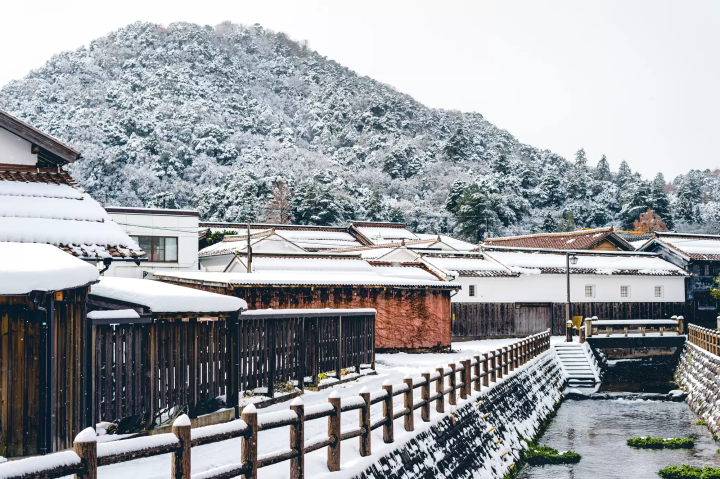
Photo by Pixta
Tottori’s weather is mostly mild, but can get heavy snowfall during the winter months of December to February, so dress accordingly whether you are visiting the sand dunes or climbing up Mount Daisen.
January (Temperature 0.8-7.7℃)
February (Temperature 0.7-8.5℃)
You will need clothing to protect yourself against the cold, like down jackets and coats. Scarfs and mittens are recommended as well.
March (Temperature 2.8-12.4℃)
A coat in needed when going outside. Some colder days will call for scarfs and gloves.
April (Temperature 7.5 -18.7℃)
Sweaters or cardigans, along with layering with a jacket would be good for this month.
May (Temperature 12.5-23.3℃)
Long sleeve shirts and cardigans will be needed.
June (Temperature 17.6-26.6℃)
With warmer weather, you will be ok with either long sleeve or short sleeve shirts. Some days you may want a thin cardigan as well.
July (Temperature 22.1-30.4℃)
August (Temperature 22.9-32.2℃)
Short sleeve shirts will be plenty. Try and stay cool.
September (Temperature 18.7-27.4℃)
Short sleeves, or long sleeves on some days will be needed.
October (Temperature 12.3-22.0℃)
With the temperatures dropping, jackets and sweaters, or even a coat may be needed on some days.
November (Temperature 7.3-16.4℃)
Jackets and sweaters are necessary. There may be some colder days where coats are needed.
December (Temperature 3.1-11.0℃)
Wearing a coat is necessary. Some days you will want a scarf and gloves to stay warm.
Dress appropriately according to the weather and enjoy your adventures in Tottori!
Japanese-American writer/editor living in Tokyo. Also a subculture enthusiast, instagram foodie, and craft beer lover. Lives on anime and videogames.










































![[Just a short distance from Nagoya] Popular Taiwanese YouTuber Alan tours Aichi, Tokoname!](https://resources.matcha-jp.com/resize/720x2000/2026/01/08-255181.webp)

